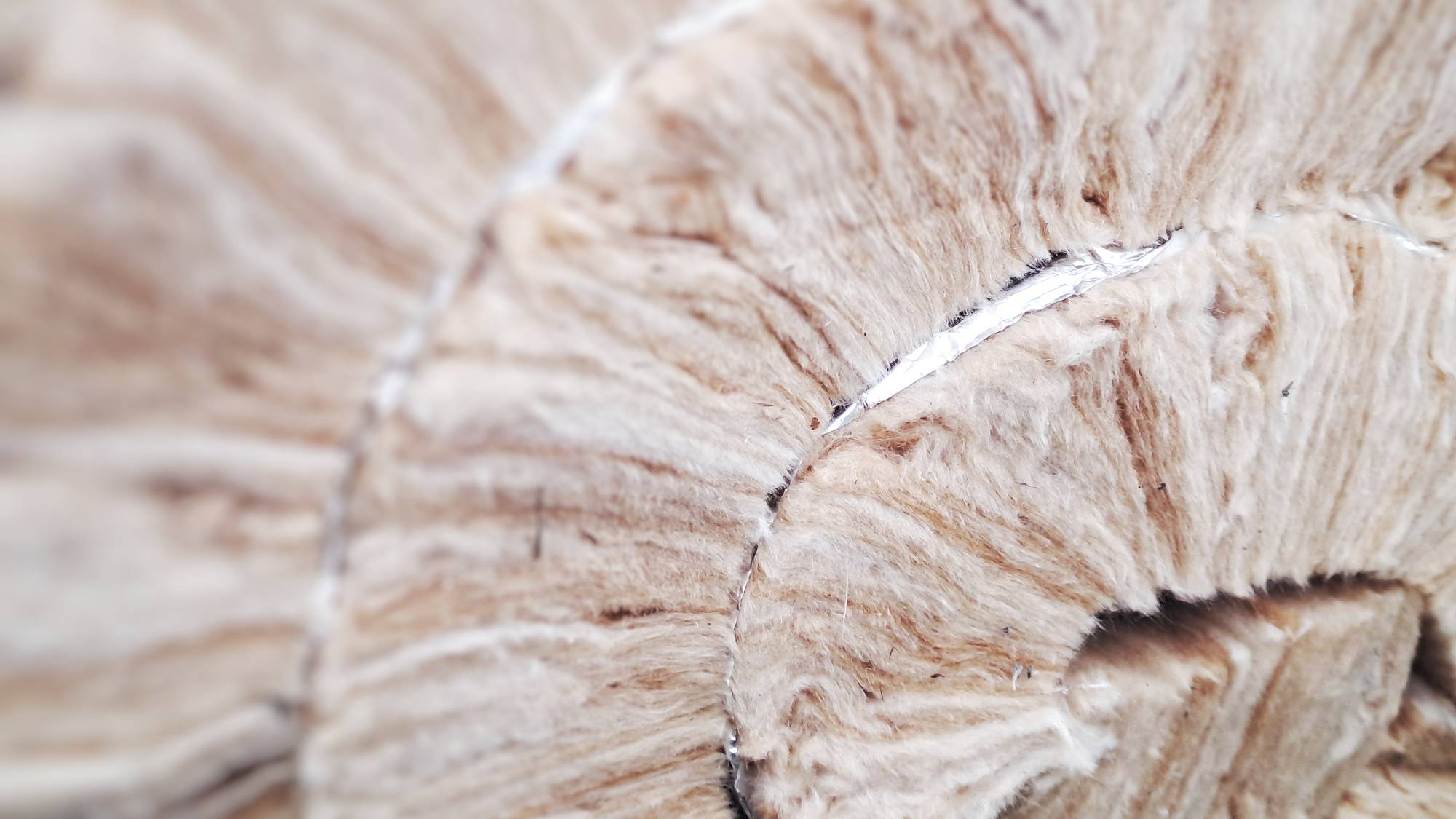These are the home extension trends predicted to be popular in 2025
Planning on a home extension? Be inspired with the latest home extension trends architects and builders suggest will be on the horizon in 2025

When you're building an extension, a successful result is usually considered one that meets your needs and is pleasing to the eye. If it's aesthetically pleasing, beautifully designed and built well, the chances are it will stand the test of time.
But, with interior trends often moving as fast as fashion, what are the home extension trends in 2025 worth investing in to make sure your investment doesn't date?
We asked architects and builders what we can expect to see more of in 2025, if home extensions should even be influenced by trends, and if so, which ones should be taken seriously and are worth considering.
Home extension trends vs homeowner needs
At the root of most house extension ideas lies a fundamental need for more space and a solution that makes your layout more liveable. On paper, it's this practical need that should drive the design of your extension. But, how do you stay true to what will work on a practical level, and not fall foul to an aesthetic whim?
"People love trends. But trends don't love people back as much and sometimes they let them down after a while," says Rick Fabrizio, director of Tholos Architects. "In interiors for example, "there are trendy colours every year, or a resurgence of a certain "period" and its features in furniture and decor. Don't be fooled by these marketing tricks ," says Rick, "and instead find the aesthetics that really work for you and that you will never be bored of."
So what are the movers and shakers in home extension trends in 2025? What can we expect to see more of and what are the home extension staples of recent years that show no sign of moving on?
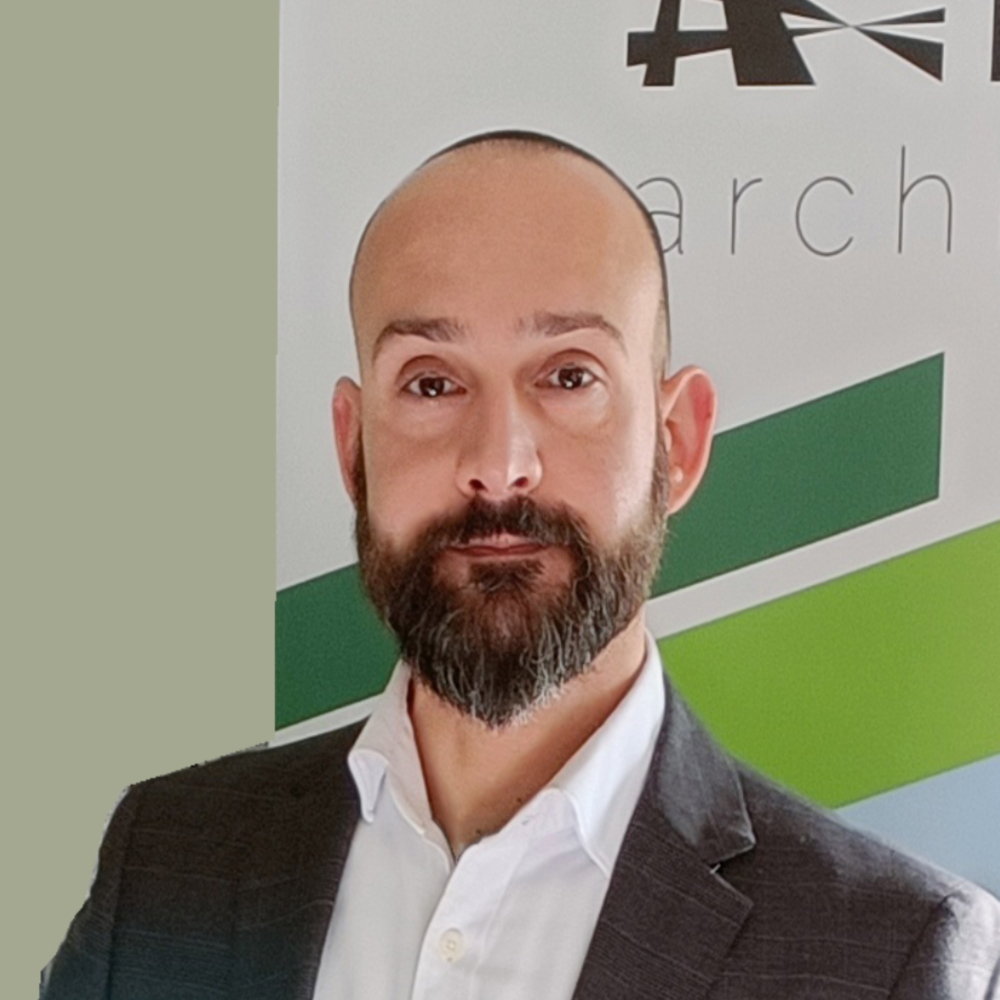
Rick is a seasoned RIBA Chartered Architect with over 15 years of diverse experience in the construction industry. Specialising in retrofit, exquisite residential design and project management, he has also cultivated expertise in modern interiors. Rick is an ardent supporter of regenerative architecture and sustainable living, has extensive experience in the UK planning system, and holds a keen interest in alternative construction methods.
Home extension trends: 2025 predictions
1. Bespoke home extensions will increase
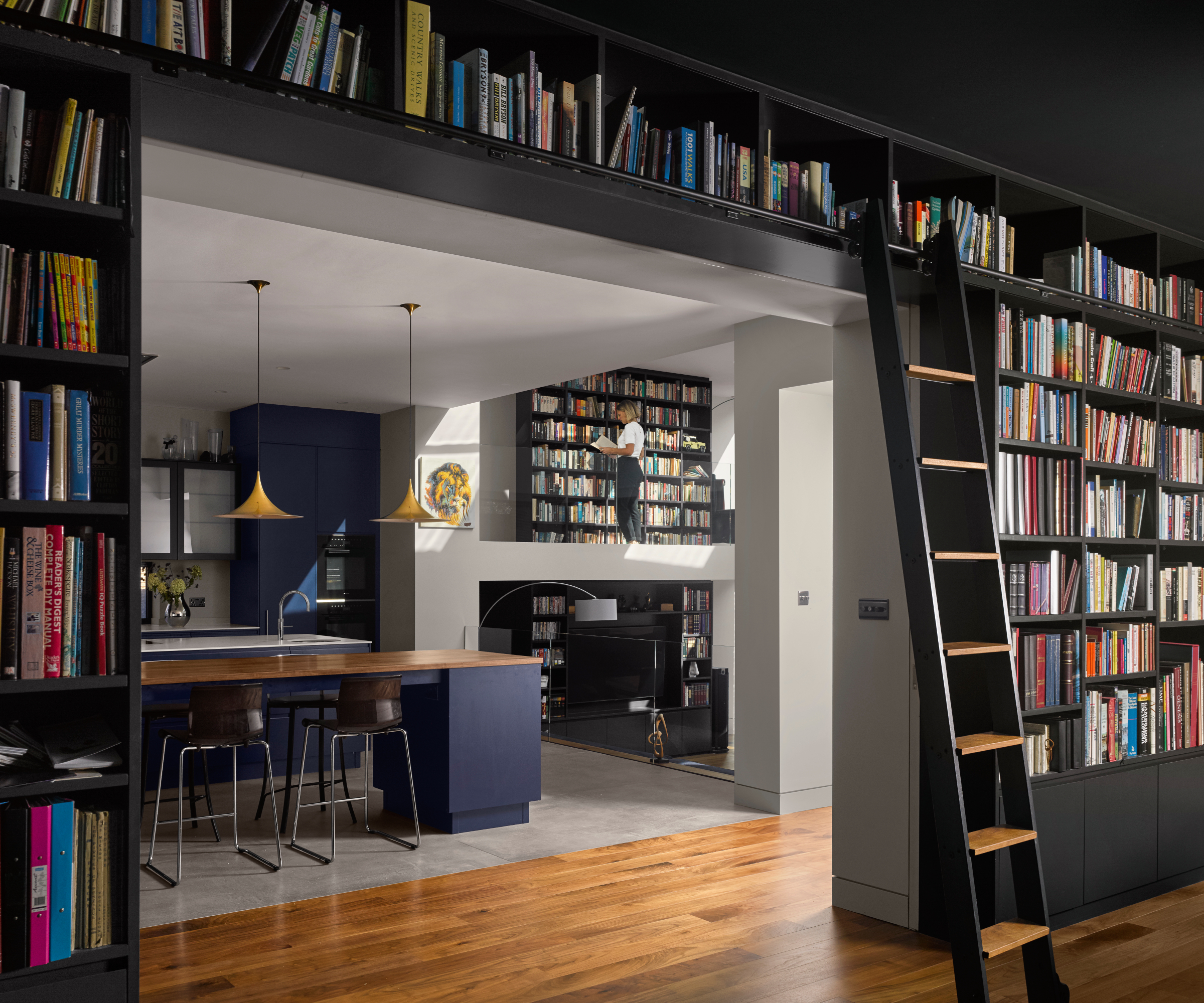
Although home extensions have historically been based on the need for another bedroom, or often the requirement for a larger kitchen, several of the experts we spoke to noted how their clients were now looking at extensions for more than just the standard reasons.
Bring your dream home to life with expert advice, how to guides and design inspiration. Sign up for our newsletter and get two free tickets to a Homebuilding & Renovating Show near you.
"The reasons that people choose to extend are numerous," says Charlie Avara, founder of Build by Charlie, "but usually I find clients who are making a conscious choice to invest so significantly in their house fall into two categories, wanting to add space to the house for example a loft conversion to gain a bedroom, or they are looking for a larger scale remodelling project that aims to customise the house to their specific needs.
"Recently, I am seeing more and more clients that fall into this second category," she says. "Homeowners who are seeking to create truly bespoke properties that suit more than just their basic needs.
"This is often spurred on by lifestyle changes such as having children," she notes, "but in recent years I have seen a growth in clients adapting their properties to suit lifestyle changes, and have helped them to create home working spaces, self-contained accommodation for a nanny or visiting relatives, media rooms and home gyms."
The consequence of this on your home extension plans? You may find it wise to consider the longer term use of your extension. Try to incorporate design ideas that allow for some element of change such as pocket doors for example that slide into a wall for now, but can be easily pulled across to create two separate rooms in the future.
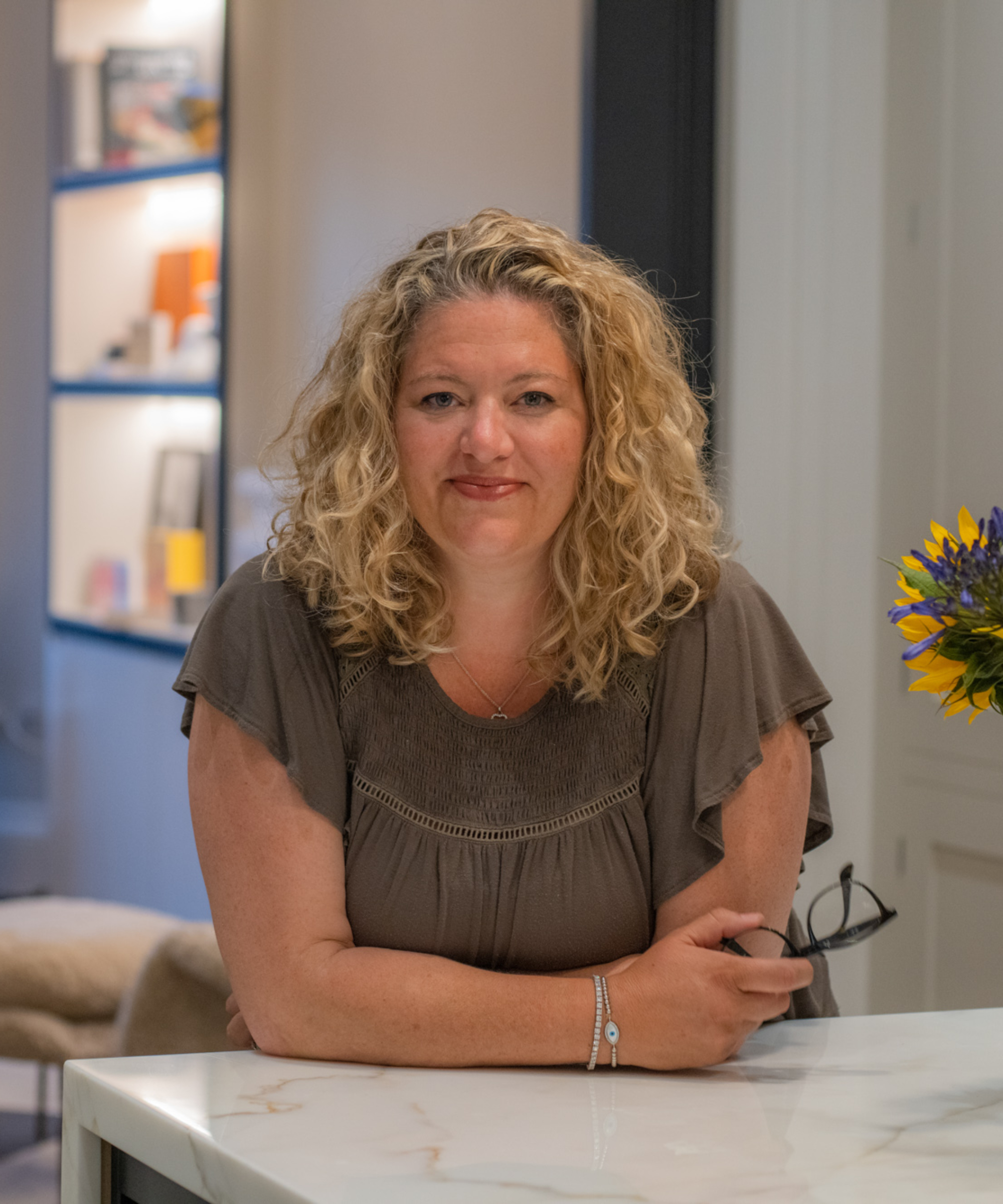
Charlie Avara is an expert when it comes to building, remodelling or renovating homes. With over 15 years experience in the construction industry, she now runs her own domestic contracting business, BUILD by Charlie and has a proven track record of delivering on projects ranging from the ultra modern, through to period properties.
2. Compact and considered extensions will be more common
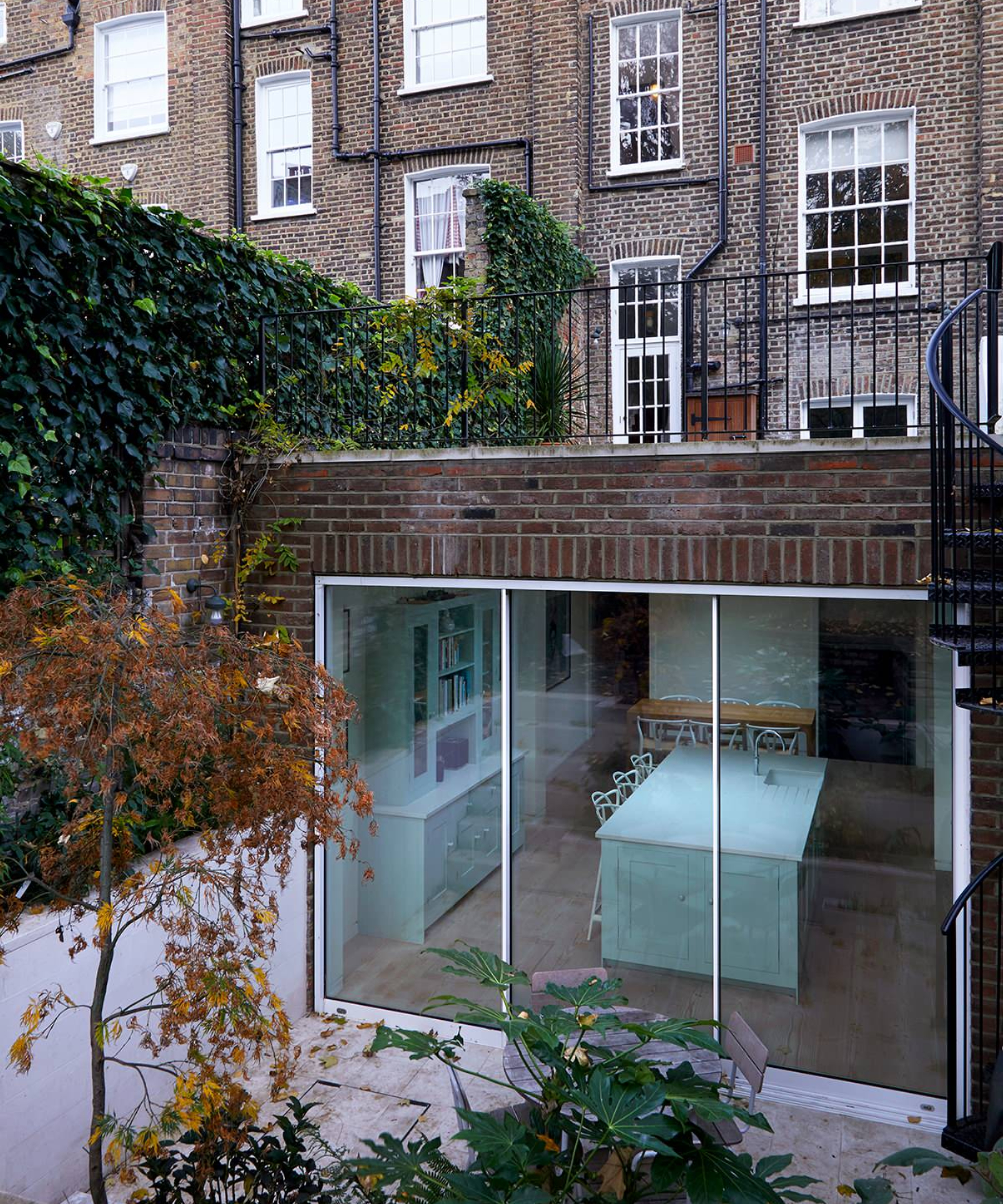
This lower ground extension houses a kitchen diner idea with roof terrace above
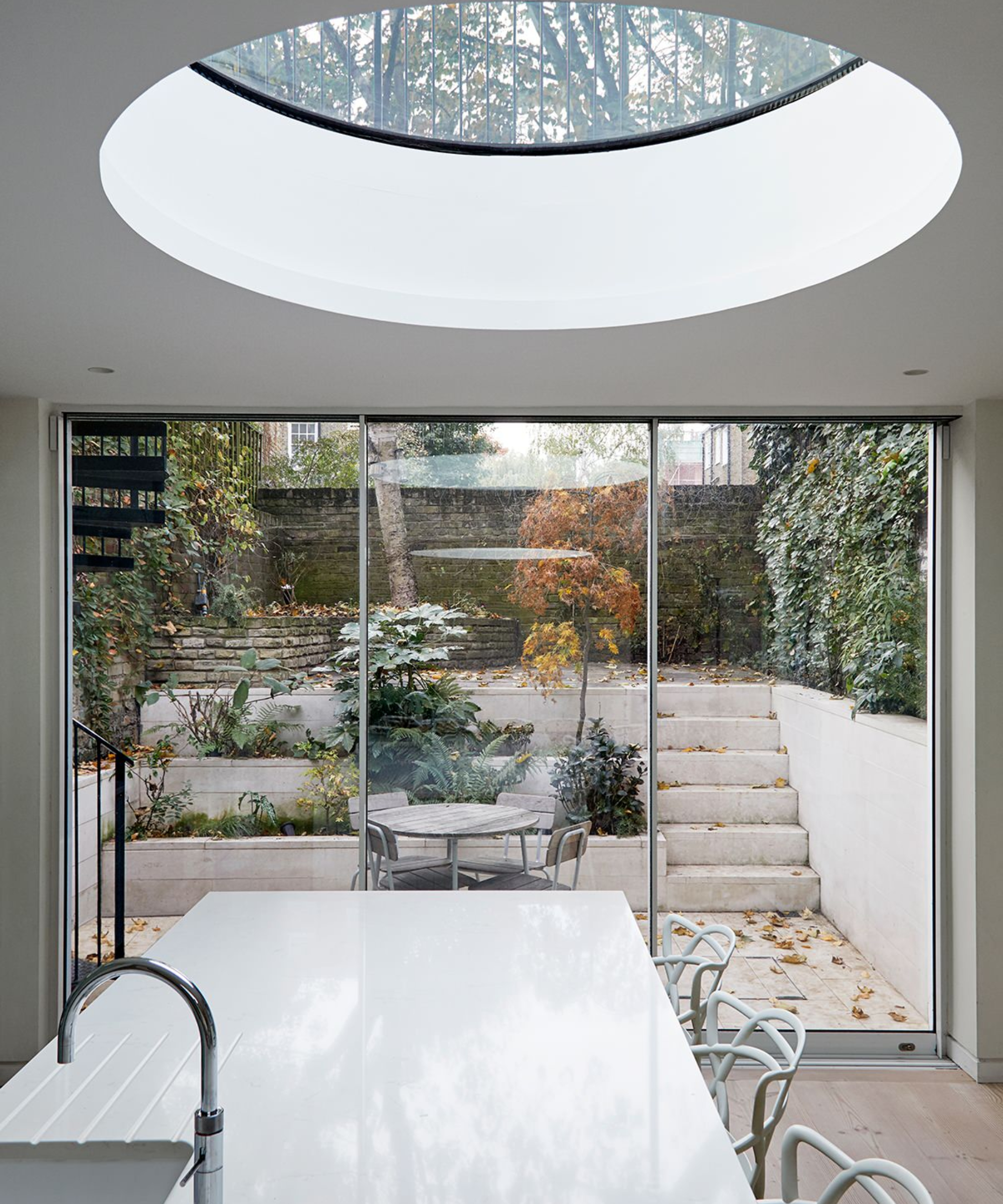
The striking circular skylights allow in lots of natural light
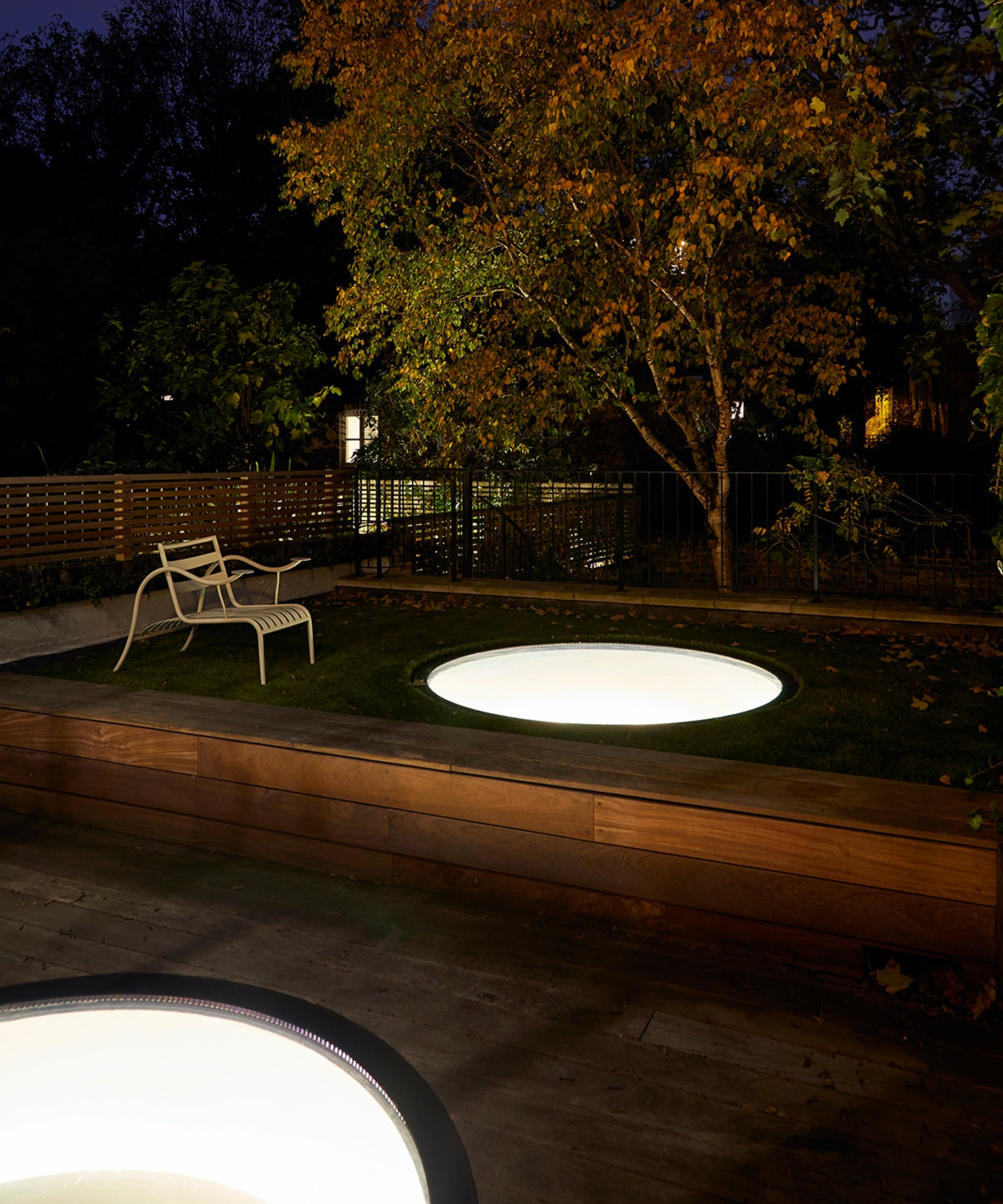
At night the roof terrace on top of the extension glows from the internal lights
In the same way we are becoming more considered in what we use a home extension for, compact extensions are also on the horizon, says Stuart Archer, director at Archer + Braun Architecture.
"One of the trends we're noticing coming through for next year is the request for more compact extensions," Stuart tells us, "mainly because every square metre counts in the budget.
"As an example, we have been employing several space saving tactics to save space in ground floor kitchen and dining additions," he expands. "These include; introducing a bench dining design rather than a standalone dining table and chairs as this saves a lot of footprint, and mini or small kitchen island ideas, and even peninsula’s instead of large wide islands.
"Breakfast pantries are also becoming popular," he adds. "These are essentially mini larders, where instead of building a dedicated pantry you can house a lot of food and hide away your toaster and coffee machines," explains Stuart.
Making the most of the space you have is also a trend noted by Charlie Avara.
"Working mostly in London means that as garden space is often at a premium," she explains. "As a result I am often helping our clients to think creatively about what is possible. From outdoor kitchens to roof terraces on extensions, outdoor spaces that add functionality to a home is a trend that I see being increasingly popular – it is a fantastic way to use outside space to its maximum potential and something our clients can’t get enough of."

Stuart Archer is a co-founder and director of Archer + Braun, established in 2017. They are a small practice of two people that is founded on a mutual passion for approachable, contemporary and contextual architecture. Archer + Braun have worked on a variety of projects for public, private and commercial clients. They have a particular interest in sensitively integrating contemporary interventions with period and listed buildings and have undertaken projects across the UK.
3. Colour will make a comeback
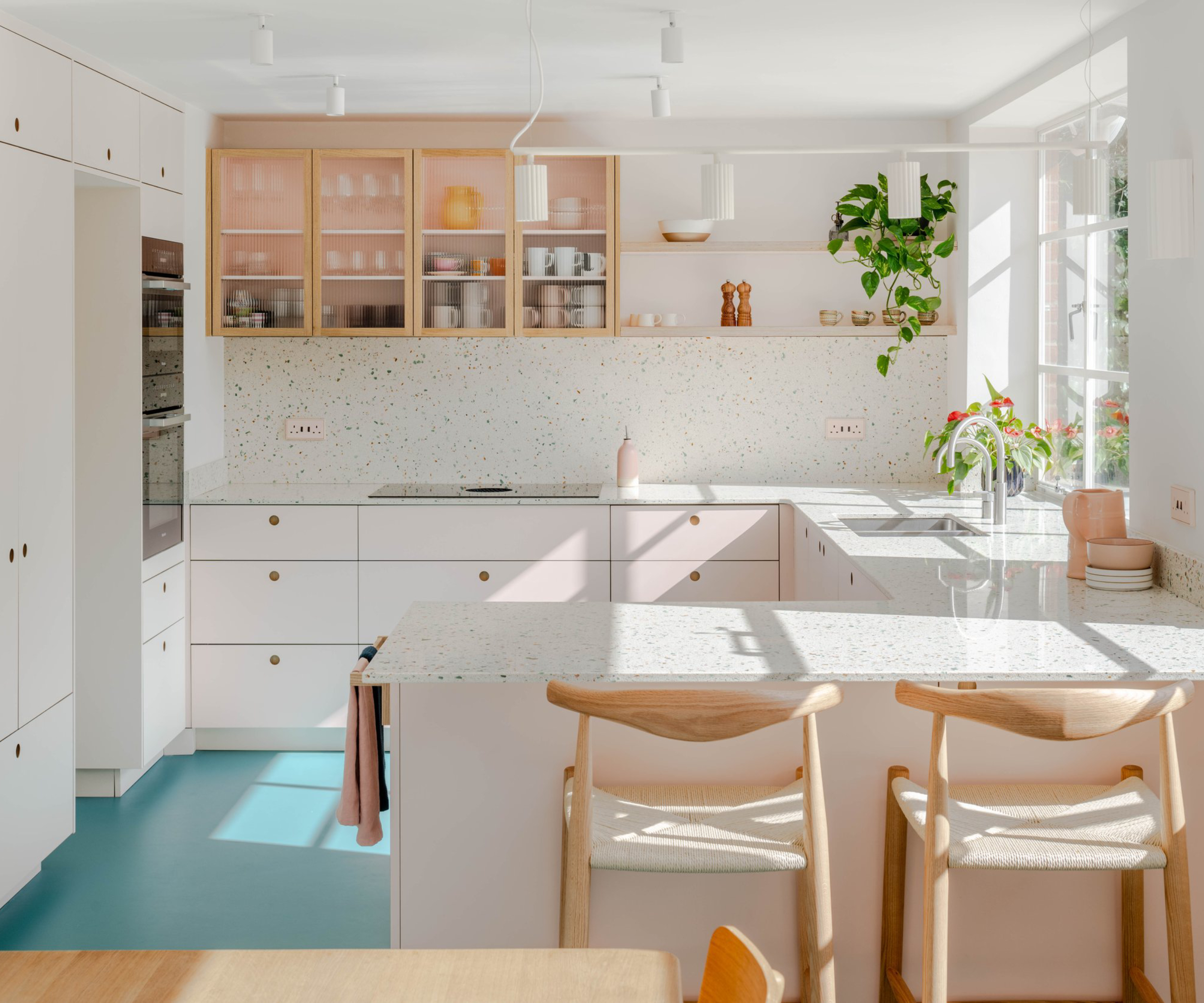
If you've been languishing in a world of neturals, or are still in your grey era, 2025 could be the year this changes. Colour is on the rise say our experts, and it's not just limited to the paint on your walls.
"Colour is so important for people," says Melissa Robinson, director at MW Architects, "and we have lots of clients embracing it in kitchens and joinery which genuinely seems to bring joy to the everyday."
This delightful project created by MW Architects features a turquoise vinyl floor, a pale pink kitchen and a custom made terrazzo worktop and splash back that all add vibrant pops of colour. An approach that is mirrored in other rooms such as a bathroom, where blue cabinets and a coral sink take centre stage.
"Even in traditional extensions and internal renovations there is a interior trend of bright punchy colours and double drenching," adds Stuart Archer, "which involves painting all available surfaces (think walls, ceilings, window reveals, skirting, cornicing) in two related colours - in a bold and confident manor."
"We are definitely moving away from the stark white interiors that dominated a few years ago," agrees Charlie Avara. "Bold monotone interiors are in the rise and are using texture and natural materials to create depth and interest."
Tempted by a pink kitchen? This bespoke pink larder unit could make a great addition to your new extension

Melissa Robinson is a director and architect MW Architects and has over 14 years experience in the field. Withcreativity in problem solving and a keen focus on materiality and construction detailing, she ensures realised designs are achieved as intended. Melissa is an active member of the RIBA Small Practice panel advisory group, and is involved in other initiatives encouraging young women into architecture.
4. Timber will remain in fashion – both inside and out
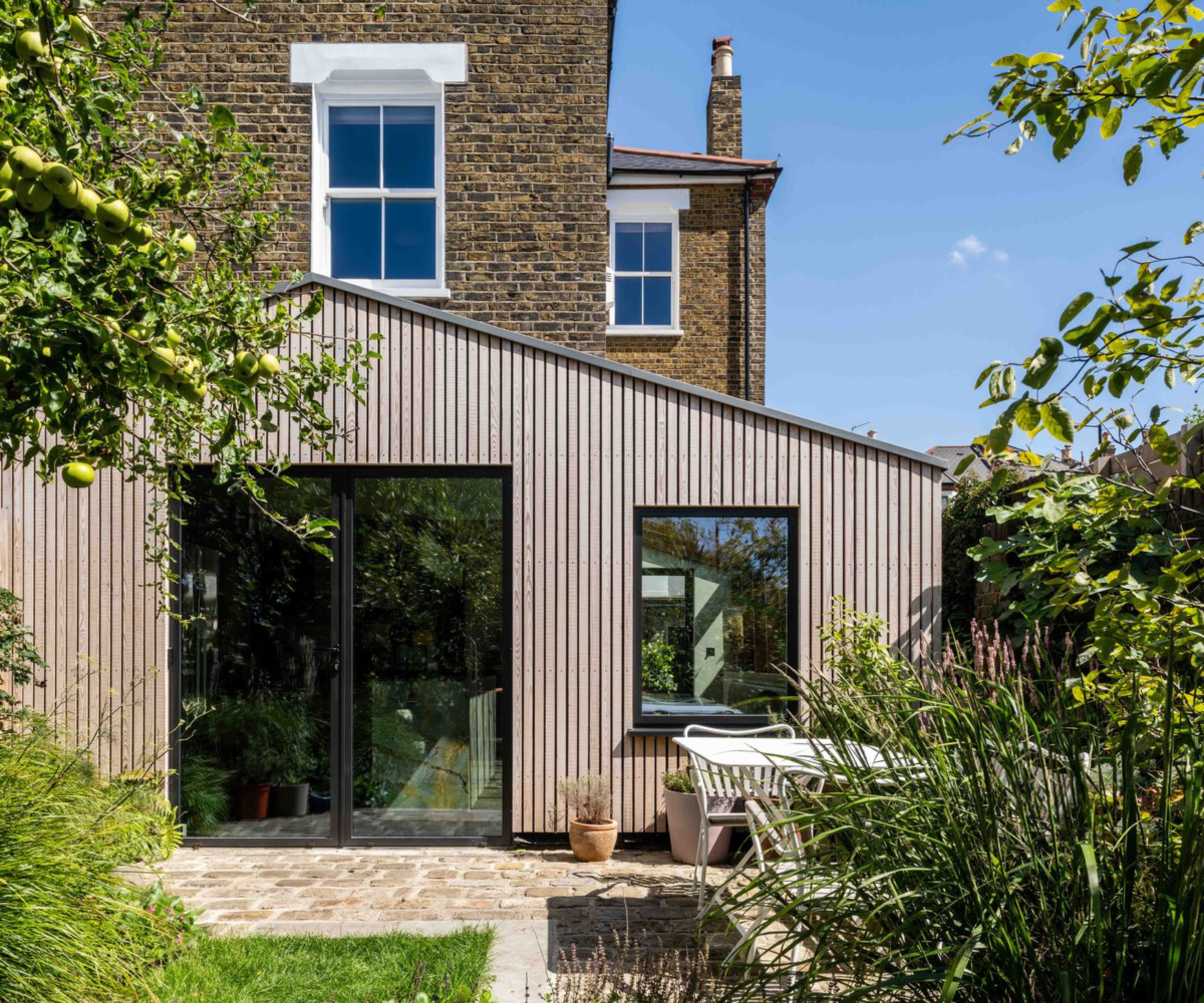
Timber in home extensions never really goes away. Whether you're seeking timber frame extensions or looking for wood flooring ideas, wood is a permanent fixture when building an extension.
However, what often changes over time are the colours, types, tones and places where we use timber. Here's what the experts are predicting we'll see more of next year.
"For interiors, exposed timber is still having a big moment," says Stuart Archer. "Both on an internal and external level.
"In some cases, we are seeing requests for the internal structure of the extension to be left visible and made from pale or mid coloured wood such as Douglas Fir. Timber fronted kitchens that are either plain or have a touch (not too much mind!) of detail such as horizontal or vertical timber patterns or framing, are also popular," he adds.
"One trend I have also seen more and more of is exposed plywood built-in furniture and cabinetry," says Rick Fabrizio. "Maybe it is a sign of the far-from-squandering times we live in and it is marking an era, " he suggests. "After all, there is nothing wrong with well executed and creative joinery work. I guess this is the feeling architects had when brutalism rose up and everyone was shocked by the use of raw concrete. Perhaps we call this plywoodism," he quips.
"We’ve also been pushing for materials that work harder and are enjoying using non painted plaster as a finish," adds Steven George, director at George and Co., noting how he too has seen a rise in ply timber, as well as textured walls and fluted fittings in kitchens and bathrooms.
"I'm seeing clients move away from traditional rendering and opting for finishes such as Japanese Shou Sugi Ban cladding," adds Charlie Avara. "This is a type of charred timber cladding which has many benefits.
"In addition to its sustainable nature, it is UV resistant for start which means it requires less maintenance than painted wood and offers a more premium feel than wooden replicas," she explains.

Steven George is a partner and design lead at award-winning architects George and Co. Working across Wales and the South West, the practice has also appeared on television in a number of different home renovation programmes.
5. Sustainability will increasingly form part of the brief
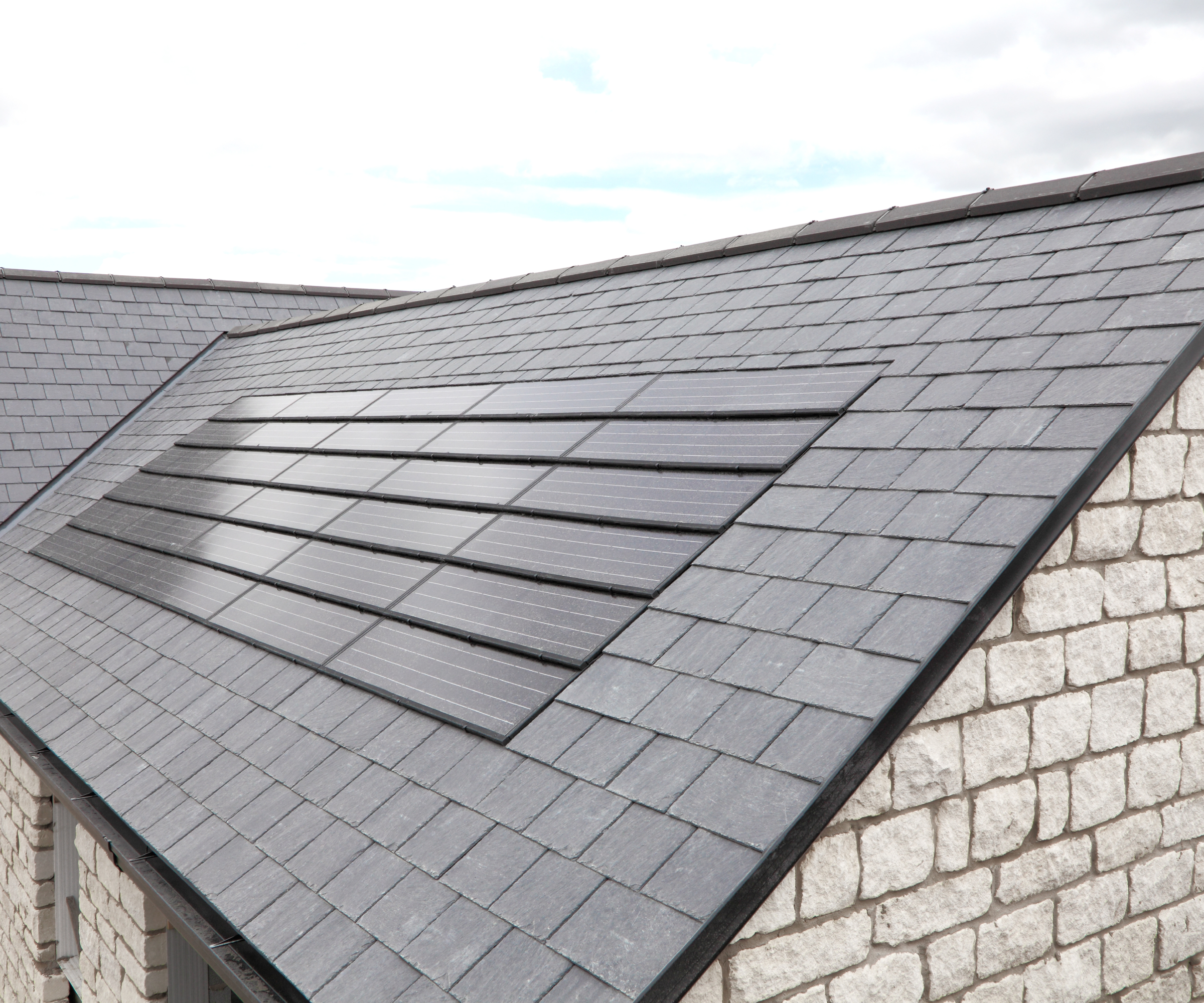
In keeping with Charlie Avara's predictions for more sustainable external timber cladding being used, sustainable home extensions are also something our experts feel we will see more of.
"Home extension designs are becoming more eco-conscious, with a focus on sustainability and environmental responsibility," confirms Steven George. "Using eco-friendly materials like recycled bricks or reclaimed wood can reduce manufacturing emissions and add character to your home."
"Using timber is on trend in modern extension ideas and interiors as it looks nice but it is also a very low carbon choice (if sourced from managed forests)," says Stuart Archer. "Terrazzo is also on trend, although this is sometimes a sustainable choice by default," he adds, "as people don’t necessarily realise that a lot of the product is actually recycled marble chippings from the marble industry mixed with resin, binders and cement.
"Using concrete is frowned upon now in many circles, although brick is still widely used, but of course isn't super eco due to the amount of energy used to produce it," he continues.
"However it’s not all doom and gloom," says Stuart. "Since Grenfell architects are trying to encourage others in the construction industry to steer away from petrochemical insulation products and towards more eco friendly products such as wood fibre insulation and even recycled denim insulation (the former has become much more affordable in the past year or so)."
"I think generally people are more aware of eco-credentials when building," agrees Melissa Robinson, "and a lot of people are trying to install solar panels and or air source heat pumps. We have a few clients successfully using government grants for these, but they are still not attainable for many and are better for bigger renovation projects," she adds.
6. Stone, brick and crittall windows stay as firm favourites
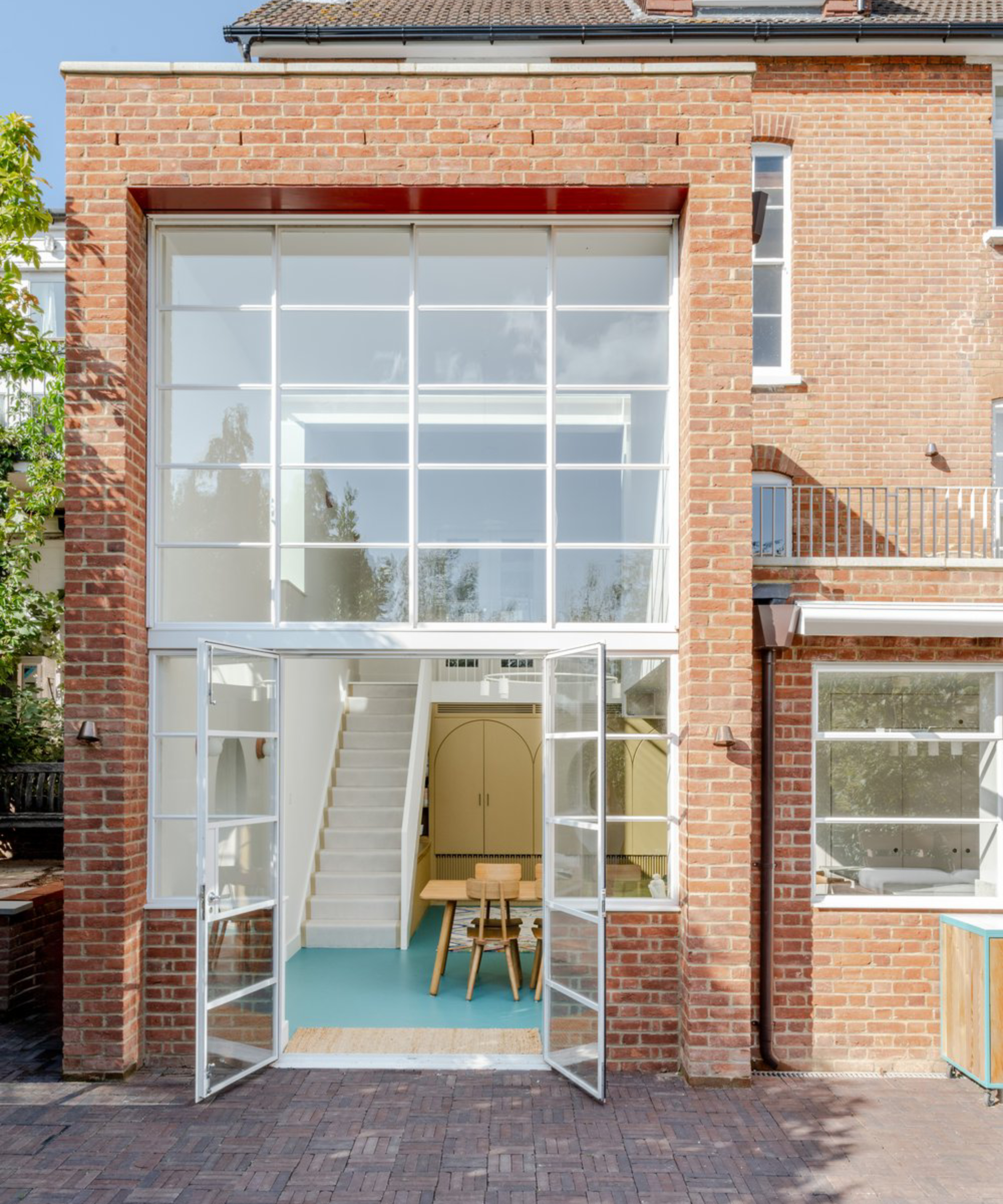
Although some new materials are on the rise, it's fair to say there are still design choices holding their ground in home extension trends.
"Externally, traditional extensions tend to still be clad in brick (and natural stone) and have Crittal windows," notes Stuart Archer. "Shaker style kitchens and joinery is all still very much de rigour in the traditional sphere too," he adds." Brass is still in for taps, metalwork and handles and when it comes to flooring, "natural materials such as terracotta, clay brick pavers (inside and outside) and wide planked timber flooring made from oak or Douglas fir are common requests."
"Externally, brick also remains an evergreen choice," adds Rick Fabrizio, "although nowadays there there are so many brick extension ideas you can create by playing with bricks. The potential is underestimated because bricks are strong enough to be structural and a feature at the same time.
"Another material beloved in current architecture and gradually becoming more widespread, to the point that I do not even consider it linguistically innovative anymore, is metal cladding," says Rick.
7. Microcement will have a surge of popularity
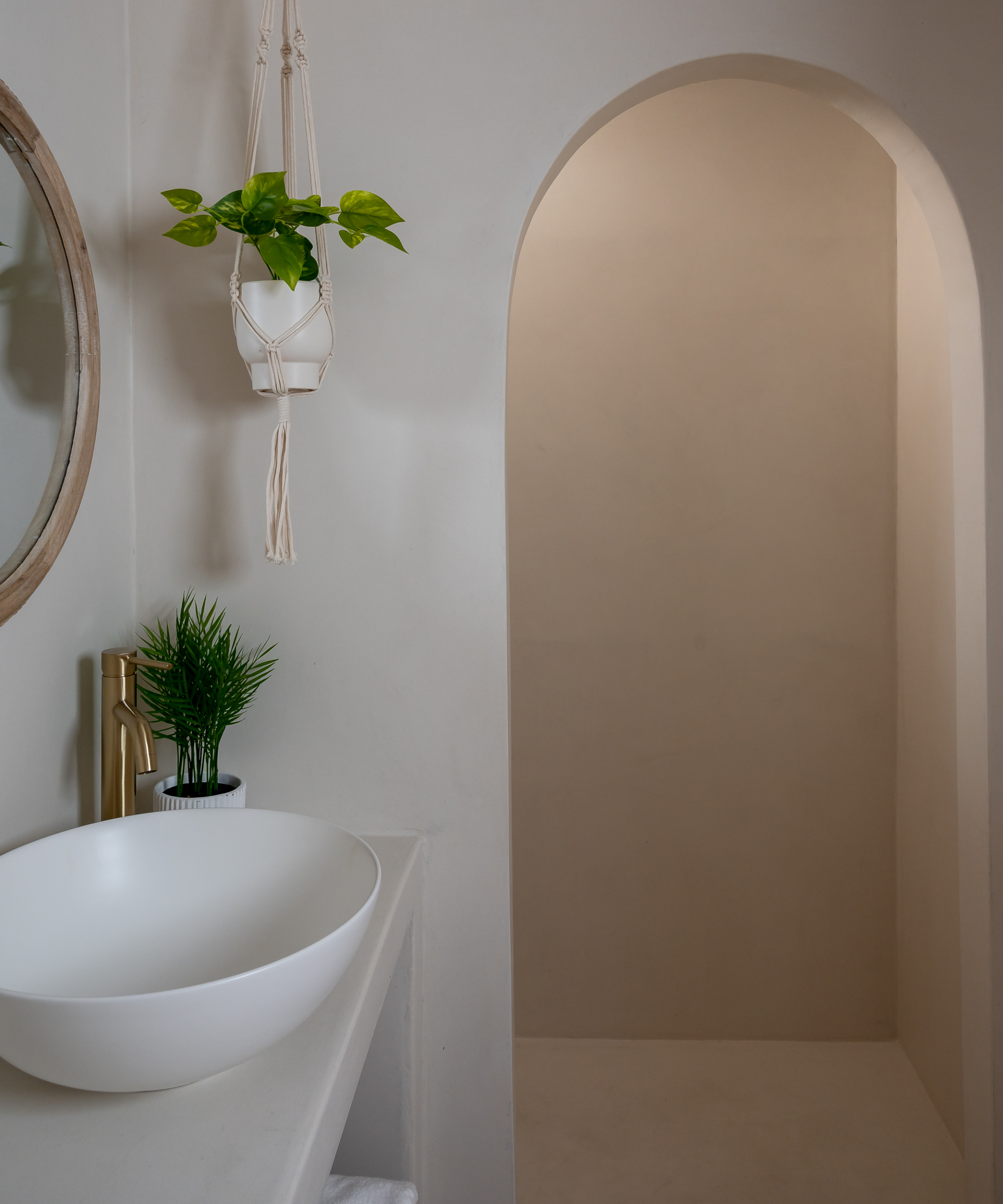
Although we may be leaning towards timber finishes, stone and cement will still have a part to play in home extension trends says Stuart Archer.
"Microcement is very popular in the contemporary interior world as it is very versatile. Although it can be used for flooring, it can also be used instead of tiles in bathrooms (even showers) and for items such as kitchen splash backs," he suggests.
"Natural stones are also on trend, although in the case of stone, the more unique the better," says Stuart. "Go to a local stoneyard and see what the world has to offer - say no to Carrara and yes to this stunning Fusion Green stone instead," he recommends.
8. Smart tech will be seen as an eco-conscious choice
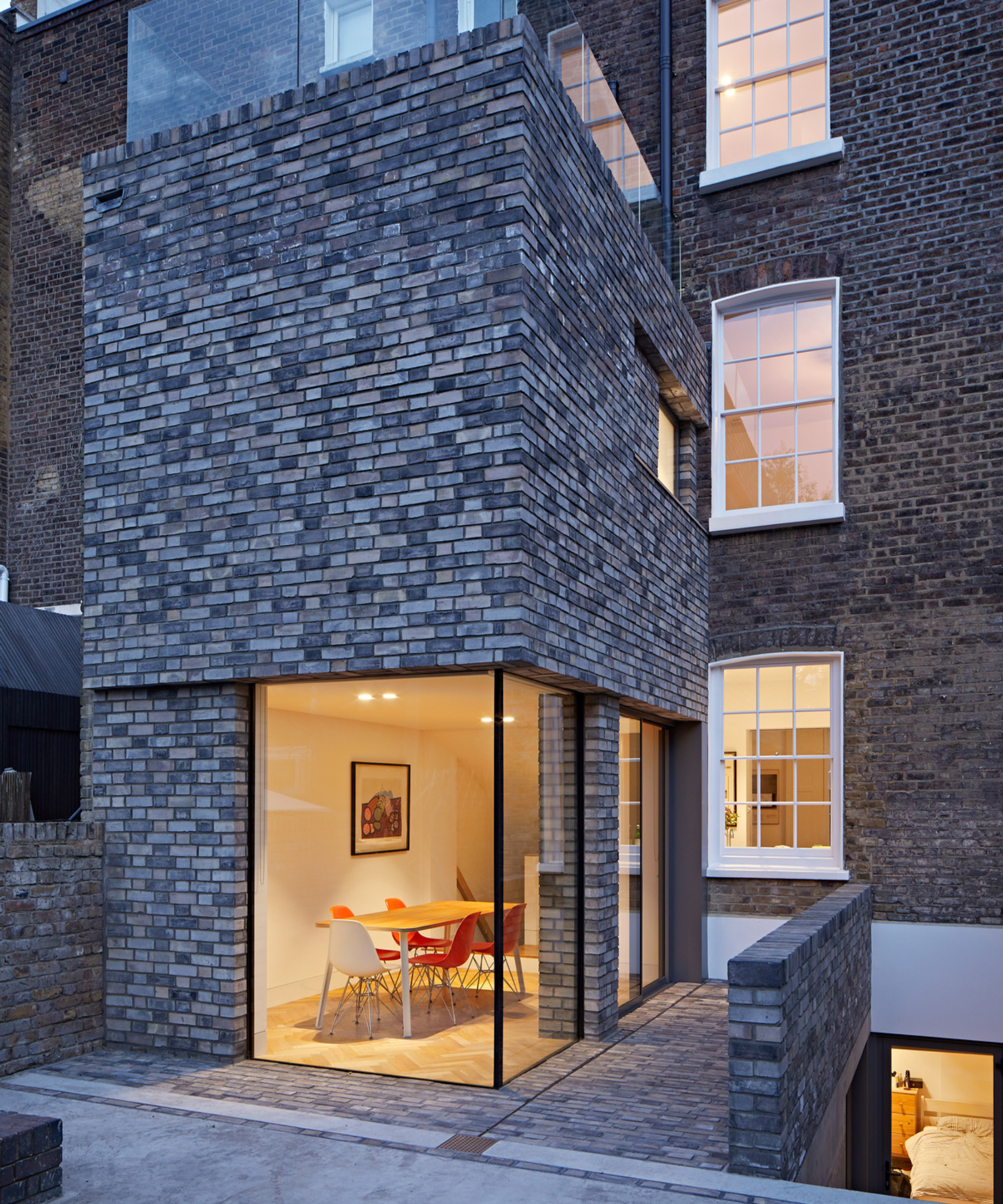
"Sustainability features in so many of our daily choices and home design is no exception," says Charlie Avara.
"When it comes to extensions the most common manifestation of this trend is investment in smart home technology. When they are investing in their properties by adding an extension, homeowners are often upgrading to automated lights, climate control and incorporating the latest security, and as part of this plan they are also opting for renewable and more efficient features.
"Technology is no longer simply about making life easier," she says. "It is now helping us to save energy too. "
9. 80's architecture will see a resurgence
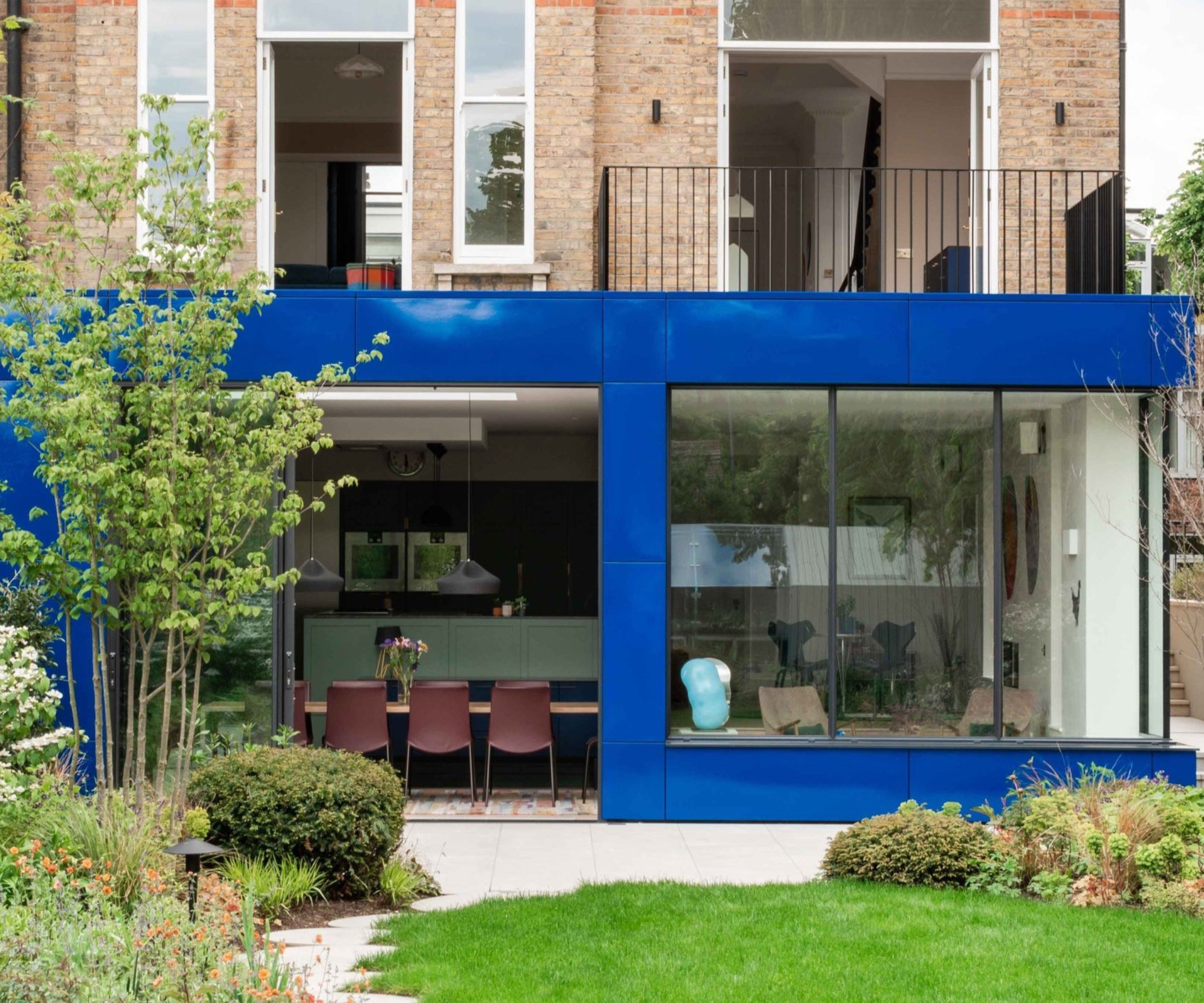
Not keen on traditional Victorian design? We could still be stepping back in time in home extension trends says Stuart Archer, but not quite as far back as what we consider period properties.
"There is also a trend amongst contemporary architects to take inspiration from the post-modernist (or 80’s inspired) architecture movement," he tells us, "so look out for more circular windows, punchy colours and primitive or geometric shapes.
Timber, tiles and brick are also being used in alternative ways he notes.
"Externally extensions continue to be clad in timber products – timber cladding or shingles due to their eco-credentials, clay bricks and long format brick are also trending in particular," he says.
When it comes to tiles, "the trendy friend in the external materials' bunch is the glossy porcelain tile," says Rick Fabrizio. "I've seen it in residential projects where it used to hint at art deco with a very modern twist. However, I'm not sure how far this look can go before it gets boring," he notes, meaning it's perhaps one to avoid in large home extension projects and instead form part of a feature wall or decorative detail.
10. Courtyards will be used to connect with nature
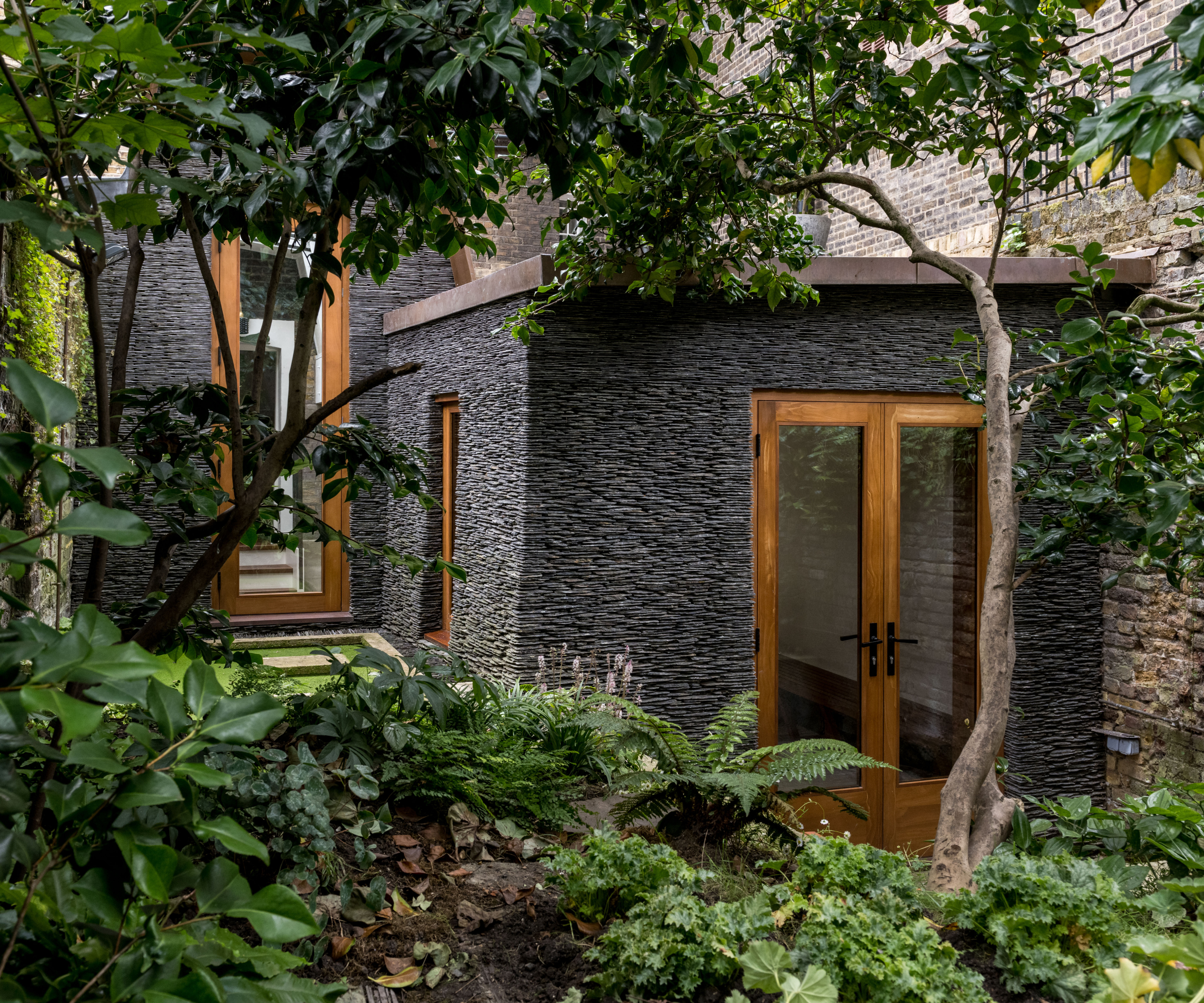
"Extensions are also making more of nature," Stuart Archer tell us. "With traditional style extensions, it is on trend to install conservatory style extensions that have a lot of plants and embrace an indoor outdoor style of design.
"With modern and contemporary extensions we also see a move towards embracing the outdoors but in a different way," he says. "Nature is incorporated via a courtyard or by cleverly integrating landscaping and planters within the architecture so you look out over plants first, then out to your garden. We've heard one landscape designer refer to it as layering the plants," he adds.
Considering garden room ideas or an outbuilding is also becoming more popular and viewed under the lens of being a type of extension says Melissa Robinson.
"Outbuildings have proved extremely popular in the fallout from Covid," she notes. "Extra space, that isn’t connected to the main house provides a great opportunity for flexible working as well as just some separation from the main house."
11. Open plan is slowly being replaced by broken plan
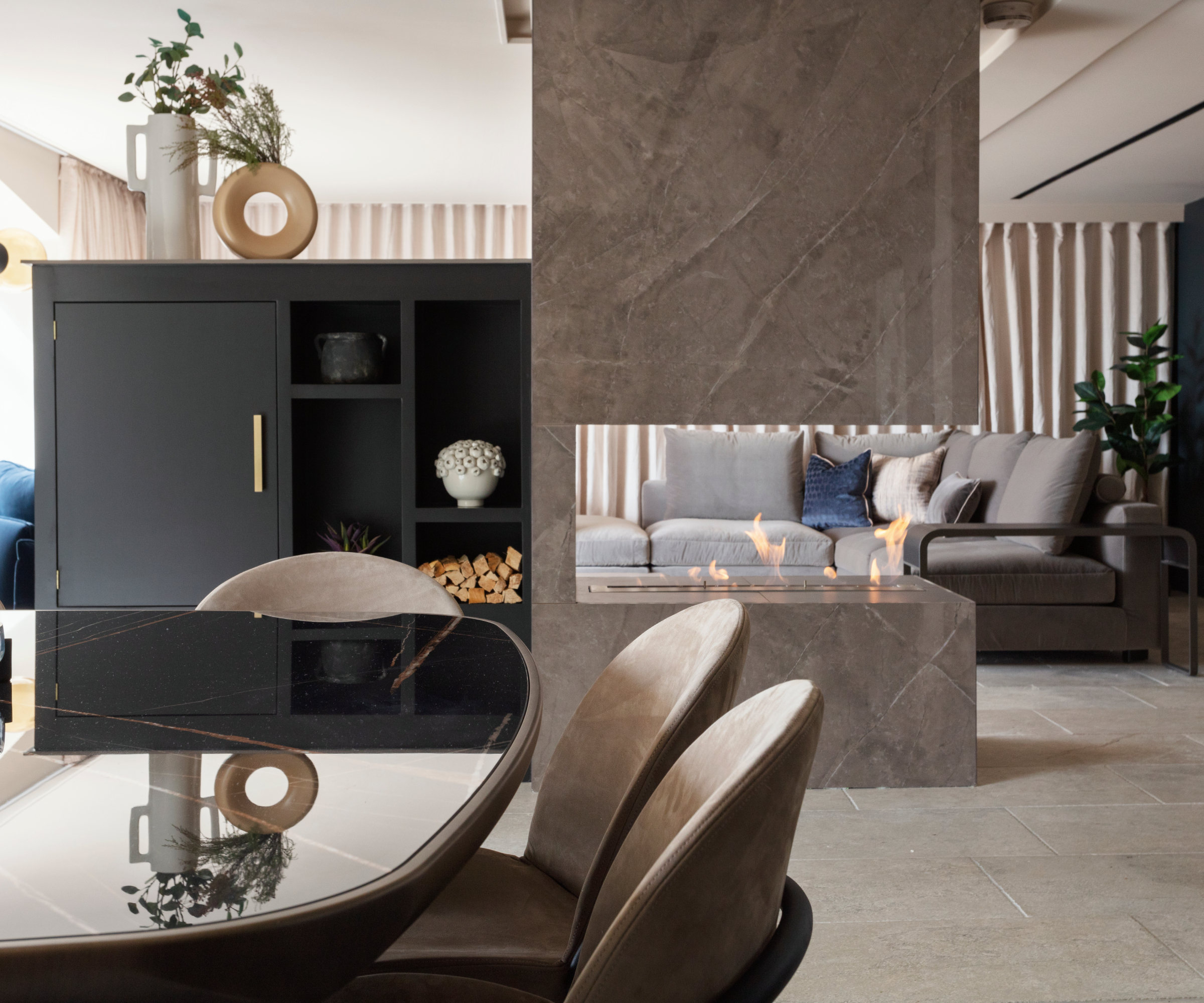
Although you may feel like you need an extension, it won't always be the first suggestion from an architect, and there is a partial drive back towards broken plan living that may make your existing home more suitable than you think.
"We always look at the existing home first," says Stuart Archer. "Sometimes the ground floor of a house particularly in period properties such as Victorian, Georgian and Edwardian homes, the layout is not efficient and can be re-jigged and the rooms repurposed in order to give more space to what you need.
"After all, no one really needs a dedicated dining room or second reception in modern life, and if it is used it isn’t used a lot," he adds. "Instead, this harking back to Victorian era architecture with smaller rooms is part of a movement that is against ‘open plan living’. Now, people want to accommodate boot room ideas and even flower cutting rooms in some extensions," he says. "Dividing space up and giving each room a new function is something we can look at with or without an extension."
It's also a trend that started during the pandemic and still stands, notes Steven George.
"Broken plan allows us to divide the space into zones to cater to different activities and privacy levels. The pandemic certainly influenced this, with people looking for spaces that were flexible provided a combination of somewhere to work from home without interruptions, as well as meeting family needs. Creating spaces that work hard and play hard remains a consistent trend," he says.
Is there anything else our experts predict for the future of home extensions and homebuilding in general?
The trend for sustainability is certainly one that Rick Fabrizio would also like to see more of.
"What I would love to see more of is natural materials, or low-chemical composites such as hempcrete, exposed and able to age gracefully, used in conjunction with an healthy and carbon-capturing design strategy," he says.
"Eco insulation such as straw or wool insulation, vegetable-based concrete, mussel-beard soundproofing, ground coffee beans panels, paper-fibre plasterboard alternatives, shellfish-based stone, lab-grown and mushroom furniture are all real things," says Rick. "Some at research stage, others already accessible and affordable, but we could still all do more to encourage clever opportunities, as all it takes is a little experimentation and fun to inspire many others to do better," he says.
"In 2021 the Architects Registration Board (ARB) issued their Competence Guidelines on Sustainability, calling all registered Architects to advocate for sustainable and regenerative design, be responsible, aware and competent at considering the wider picture and respond to the climate emergency.
"Both architects and clients must all play our part in the process," says Rick, "and one way of doing this is by viewing home extension trends not just as temporary fad, but as a chance to make a difference as well."
But, if you've not built an extension before, as well as knowing what design and style to choose, you'll also need to understand the different stages you'll encounter. Increase your knowledge by heading to our guide to planning permission for extensions and understand what's involved along each step of the way by taking a look at our comprehensive extension planner.

Sarah is Homebuilding & Renovating’s Assistant Editor and joined the team in 2024. An established homes and interiors writer, Sarah has renovated and extended a number of properties, including a listing building and renovation project that featured on Grand Designs. Although she said she would never buy a listed property again, she has recently purchased a Grade II listed apartment. As it had already been professionally renovated, she has instead set her sights on tackling some changes to improve the building’s energy efficiency, as well as adding some personal touches to the interior.

